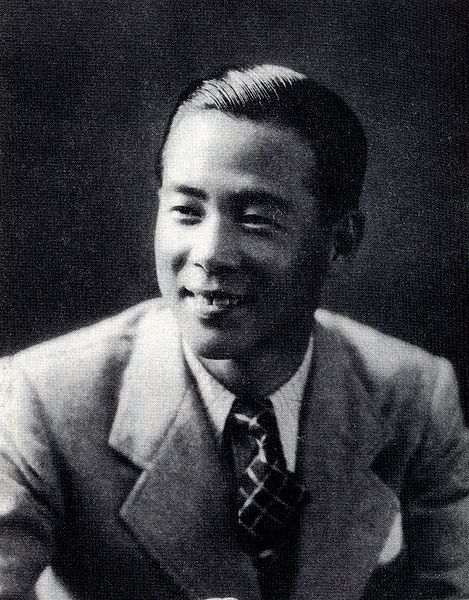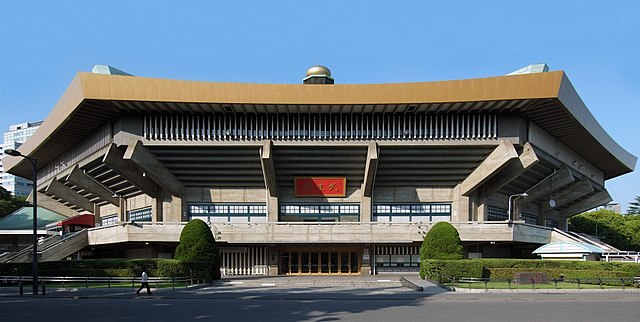City pop is a loosely defined form of Japanese pop music that emerged in the late 1970s and peaked in popularity during the 1980s. It was originally termed as an offshoot of Japan's Western-influenced "new music", but came to include a wide range of styles – including funk, disco, R&B, AOR, soft rock, and boogie – that were associated with the country's nascent economic boom and leisure class. It was also identified with new technologies such as the Walkman, cars with built-in cassette decks and FM stereos, and various electronic musical instruments.
VIP Liner bus with images of Mariya Takeuchi drawn by Mari Yamazaki.
J-pop, natively also known simply as pops , is the name for a form of popular music that entered the musical mainstream of Japan in the 1990s. Modern J-pop has its roots in traditional music of Japan, and significantly in 1960s pop and rock music. J-pop replaced kayōkyoku in the Japanese music scene.
Ichiro Fujiyama, influential ryūkōka singer
Nippon Budokan, legendary place for Japanese musicians
Shibuya-kei artist Keigo Oyamada (left) with YMO member Ryuichi Sakamoto
Concert of pioneer of visual kei, X Japan at Hong Kong in 2009 after their 2007 reunion





